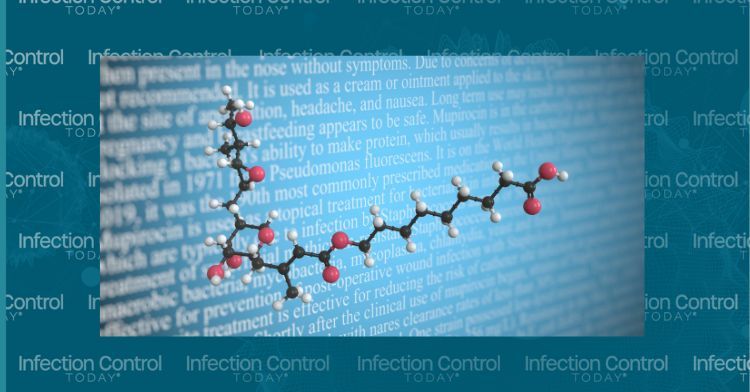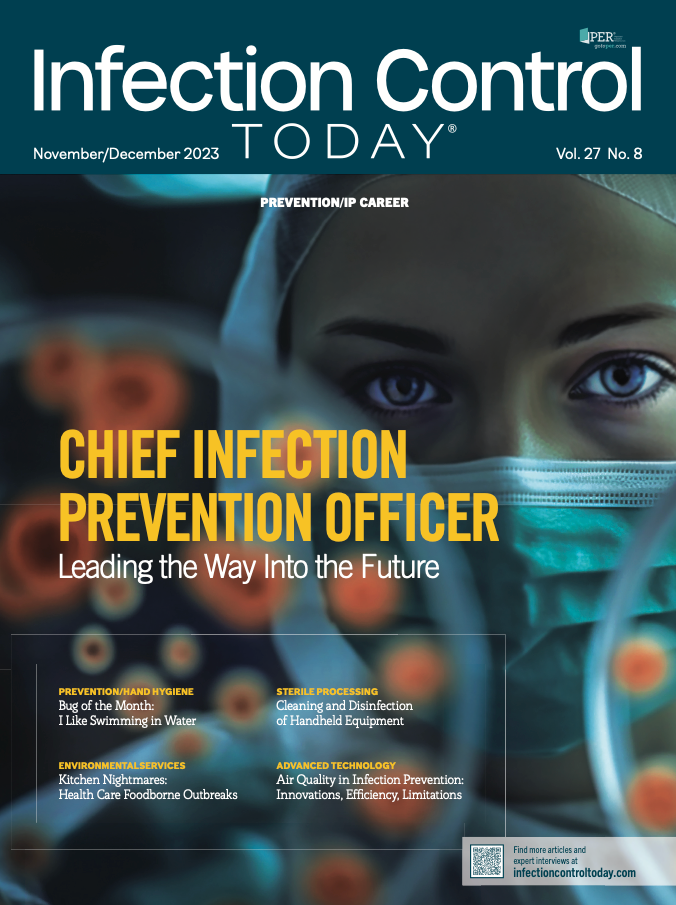Hospital-associated infections are still a serious issue nationwide, but a recent study offers some hope in combatting them. Staphylococcus aureus (S aureus) and methicillin-resistant Staphylococcus aureus (MRSA) are 2 of the most pervasive infections found in intensive care units (ICUs). In an 18-month trial involving 801,668 adult ICU admissions, researchers found that a nasal antibiotic ointment, mupirocin, effectively prevented S aureus infections in critically ill patients. The results showed an 18% reduction in the risk of S. aureus clinical cultures and a 15% reduction in the risk of methicillin-resistant MRSA. These numbers are promising in the fight against these persistent infections.
To learn more about the study, “Nasal Iodophor Antiseptic vs Nasal Mupirocin Antibiotic in the Setting of Chlorhexidine Bathing to Prevent Infections in Adult ICUs: A Randomized Clinical Trial” Infection Control Today® (ICT®) John Jernigan, MD, MS, director of the Office of HAI [health care-associated infections] Prevention Research and Evaluation of the CDC.
ICT: Can you provide an overview of the study's findings on the effectiveness of Mupirocin is used in preventing Staphylococcus aureus infections in critically ill patients?
John Jernigan, MD, MS: A little background Staphylococcus aureus is a common cause of infections in patients and ICUs. One approach to preventing these infections is using a combination of an agent and the nose to reduce the burden of S aureus and the nose, which is where this organism tends [to reside] with the combination of the nasal decolonization agent with a chlorhexidine bath. It is known to prevent methicillin-resistant S aureus infections and all-cause bloodstream infections in ICU patients.
Parts of this have been broadly adopted in the US, but the chlorhexidine bathing component has had a more robust uptake. The adoption of the Mupirocin component has been a little bit slowed in part by concerns that there is such a thing [as engineering] resistance. And there's a concern that widespread use of Mupirocin could engender further repairs and resistance. This study was designed to find out whether a different agent and one in which we're not so concerned about resistance because it's an antiseptic that is povidone iodine or an iodophor, the study was designed to test the hypothesis that if you use the iodophor in the nose, along with the chlorhexidine piping might be just as effective as the Mupirocin [and] chlorhexidine combination. It was a cluster randomized trial to examine this, but the study found out that they weren't equivalent.
[The study] suggested that the patients who received chlorhexidine with Mupirocin had an 80% reduction in the risk of S aureus clinical cultures and a 15% reduction in the risk of methicillin-resistant S aureus clinical cultures in comparison to patients who received the chlorhexidine iodophor combination.
So, the results suggest that mupirocin for the nasal decolonization component of the regimen may be preferred over iodophor because it's more effective at preventing S aureus infections. The study also confirmed or demonstrated that the nasal component of the regimen is important.
ICT: What specific challenges did you face? And did you have any unexpected or surprising results from the study?
JJ: One of the surprising results is that mupirocin resistance does exist. In health care systems and health care facilities where this has been widely practiced, we do see some element of Mupirocin resistance and the observation that appears--and was superior to the item audit for despite this element of resistance—was a bit of a surprise.
ICT: Mupirocin is administered nasally. Can you discuss the safety and tolerability of this approach in critically ill patients?
JJ: One of the interesting things is that the health care system in which this large trial was conducted is a health care system in which the original trial demonstrated the effectiveness of this strategy. It was conducted in the same system, and that was 7 years ago. And that the health care system adopted this approach routinely. It has been doing so for the ensuing 7 years, including until this trial, and what [the investigators] noticed is that it's been very well tolerated. There have been very few adverse reactions reported in this study. There are over a million patient days that were studied, and I believe there are only 2 adverse events reported, and one was relatively minor, and both abated after discontinuing every agent. I think the fact that in this one health care system, they've been using this for many, many years now. The fact that the majority of ICUs in the United States actually use the chlorhexidine bathing component anyway, that at least that component…are the safety and tolerability has been well documented now for many years.
John Jernigan, MD, MS
"Sometimes we use the word 'decolonization,' but we prefer the words 'pathogen burden reduction' now because it can be hard to completely decolonize the patient of colonizing organisms sometimes, but it's quite likely that if you can suppress the amount of harmful germ that's living in or on a patient's body, it can have a big beneficial effect."
ICT: What are the key takeaways from this study that hospitals and health care providers should consider when implementing infection prevention strategies in ICUs?
JJ: The key takeaways are this can be a very important component for their infection prevention programs and ICU patients. It suggests that, in addition to chlorhexidine bathing, decontaminating the nose with either repairs or iodophor adds to the benefit and that there may be some advantage to mupirocin over iodophor. And that's something they should strongly consider in this particular patient population.
I will say that 2 components that sometimes there may be issues that make it easier for a system or facility to use iodophor over mupirocin. And if that's the case, iodophor is still effective. The study compared results to what they did in the trial 7 years ago. And the iodophor is effective over no decolonization. It's just that mupirocin has some advantage over that. So if there's some reason that they can't use the mupirocin, either by cost or formulary, availability, etc, idophor is still an attractive option.
But also say that this strategy provides further evidence that reducing pathogen burden on a patient can be a highly impactful strategy for preventing health care-associated infections. Sometimes we use the word “decolonization,” but we prefer the words “pathogen burden reduction” now because it can be hard to completely decolonize the patient of colonizing organisms sometimes, but it's quite likely that if you can suppress the amount of harmful germ that's living in or on a patient's body, it can have a big beneficial effect.
And this is exactly that. We're using chlorhexidine bathing agent in the nose to reduce the burden of S aureus and other germs on the patient's skin and mucous membranes. The study shows that that can lead to reduced infection.
But we think that to maximize the impact of this strategy, we need more agents to be developed and brought to market to extend the benefit of this one example is some of the most important antibiotic-resistant organisms. They'll live as much in the nose or on the skin as in the gastrointestinal tracts. Obviously, chlorhexidine bathing and mupirocin don't address that. Some investigators are looking at agents that can reduce pathogen burden and the gastrointestinal tract, but these have not yet been made available in the market. We think that there's a lot more research and development that can be done it should be done here. In 2022, we [with] CDC and FDA hosted a joint workshop describing the need for supporting decolonization strategies to reduce the risk of HAIs. This study and related studies are critical for building evidence to support future decolonization strategies.
ICT: Do you have any plans for future research in this area?
JJ: Yes, as I mentioned, we're in discussions with FDA. This study was funded through one of our CDC’s extramural research programs, the CDC Prevention Epicenters program.
We have several studies going on that are examining this issue of pathogen burden reduction as a way to prevent health care-associated infections and, in particular, antibiotic-resistant infections. We know that many of the most important problems in antibiotic resistance are caused by the transmission of antibiotic-resistant germs and specific strains of antibiotic-resistant germs in health care settings. So, we think that this strategy of reducing the burden of colonization that are on a patient's body can help do 2 important things. One, it helps prevent transmission from colonization to infection, and the patient who's colonized. But number 2, and perhaps even more importantly, it prevents transmission of that germ to other patients in health care system. We call that the indirect effect. And we think that the indirect effect might be quite important. We're very interested in helping pursue this strategy and our extramural research programs.
The trial can be found here.

